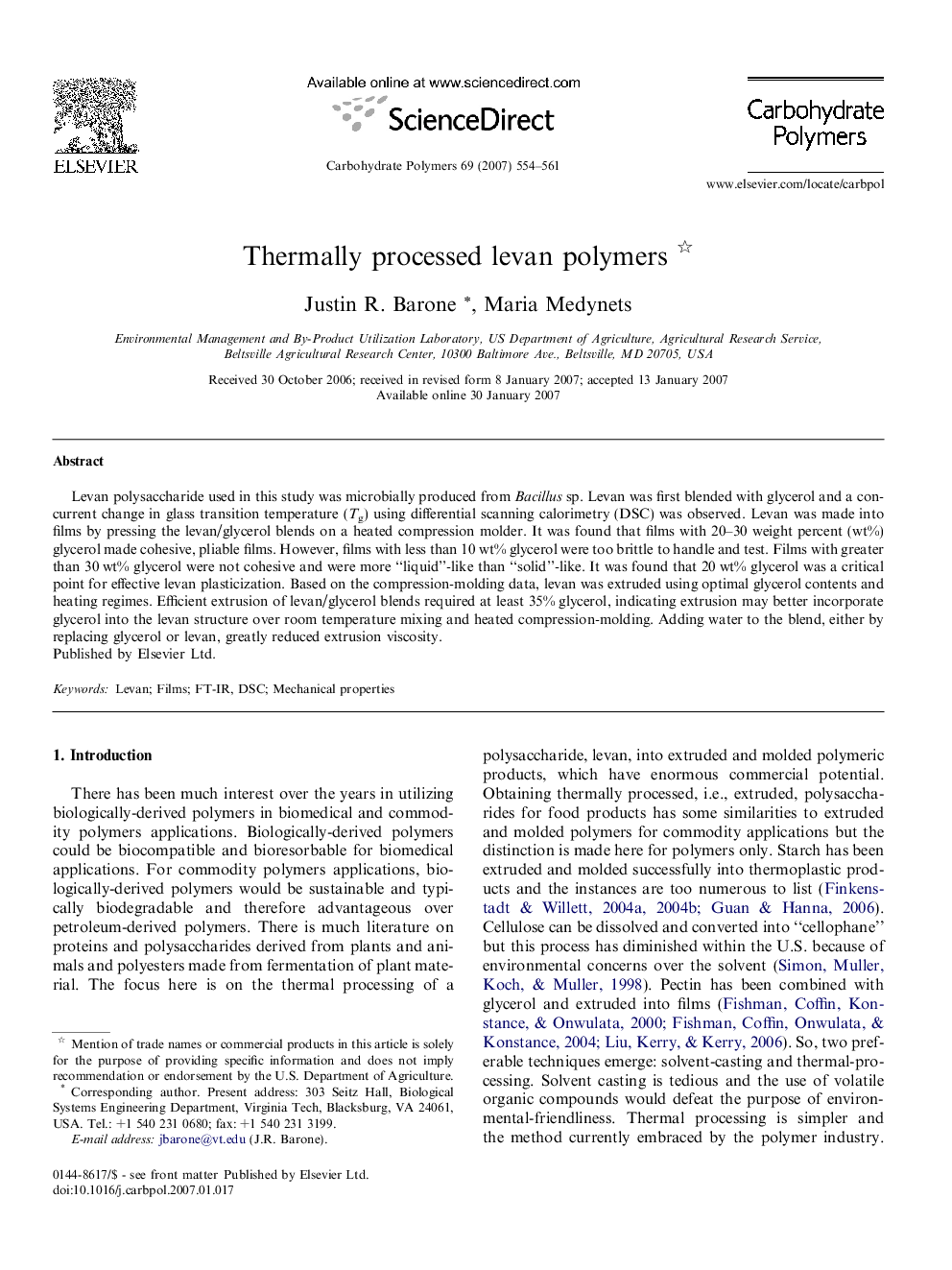| Article ID | Journal | Published Year | Pages | File Type |
|---|---|---|---|---|
| 1387433 | Carbohydrate Polymers | 2007 | 8 Pages |
Levan polysaccharide used in this study was microbially produced from Bacillus sp. Levan was first blended with glycerol and a concurrent change in glass transition temperature (Tg) using differential scanning calorimetry (DSC) was observed. Levan was made into films by pressing the levan/glycerol blends on a heated compression molder. It was found that films with 20–30 weight percent (wt%) glycerol made cohesive, pliable films. However, films with less than 10 wt% glycerol were too brittle to handle and test. Films with greater than 30 wt% glycerol were not cohesive and were more “liquid”-like than “solid”-like. It was found that 20 wt% glycerol was a critical point for effective levan plasticization. Based on the compression-molding data, levan was extruded using optimal glycerol contents and heating regimes. Efficient extrusion of levan/glycerol blends required at least 35% glycerol, indicating extrusion may better incorporate glycerol into the levan structure over room temperature mixing and heated compression-molding. Adding water to the blend, either by replacing glycerol or levan, greatly reduced extrusion viscosity.
